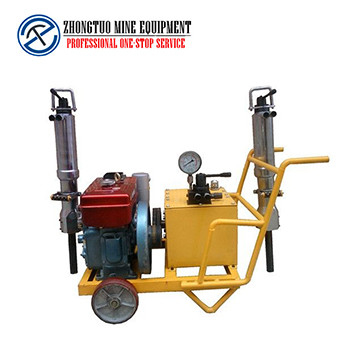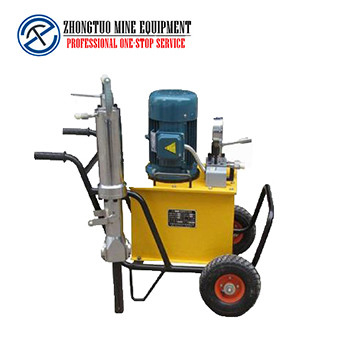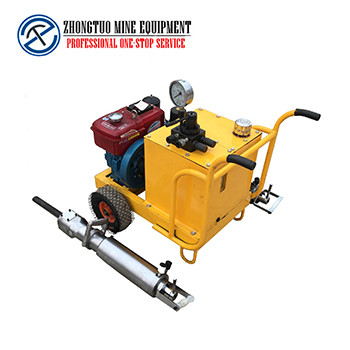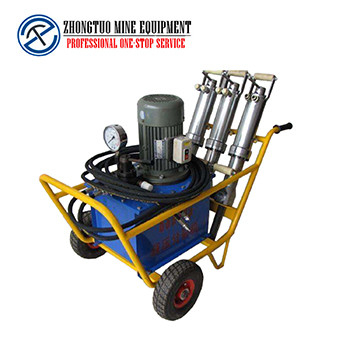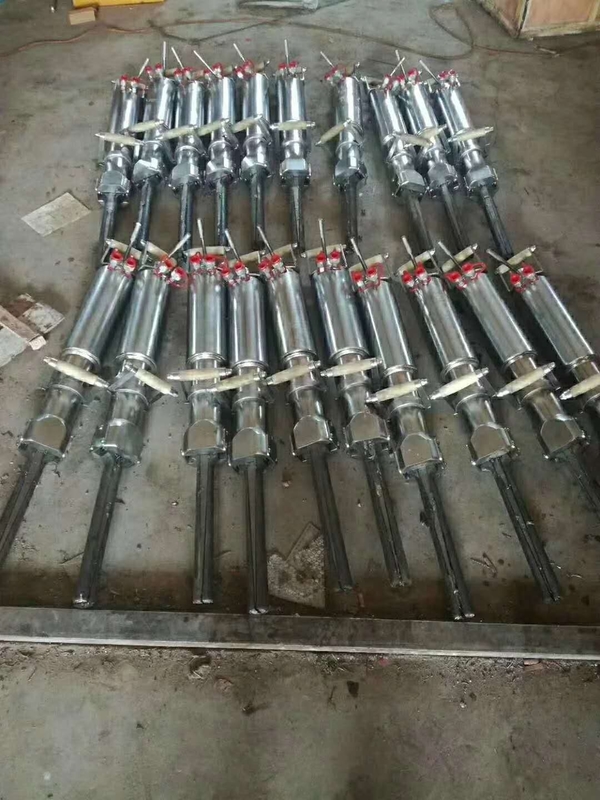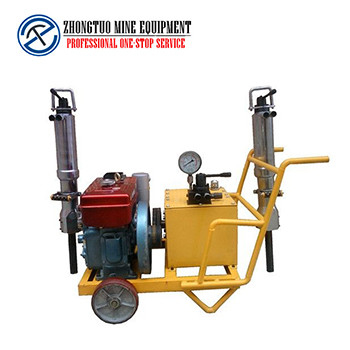
Engineering Tool Hydraulic Concrete Splitter 90-200mm Piston Stroke
-
Highlight
Engineering Tool Hydraulic Concrete Splitter
,Hydraulic Concrete Splitter 90mm Piston Stroke
,hydraulic rock splitters 200mm Piston Stroke
-
PowerHydraulic
-
Drilling Depth(mm)450-650
-
Theoretical Split(T)800-840
-
OriginChina Shaanxi
-
HS Code8467890000
-
After-sales ServiceTracking Guidance & Service
-
WarrantyOne Year
-
Place of OriginChina
-
Brand NameZHONGTUO
-
CertificationCE, ISO
-
Minimum Order Quantity1PC
-
Pricenegotiated
-
Packaging DetailsWooden Case
-
Delivery Time7-15days
-
Payment TermsL/C, D/A, D/P, T/T, Western Union, MoneyGram
Engineering Tool Hydraulic Concrete Splitter 90-200mm Piston Stroke
Description of Hydraulic Concrete Splitter
Hydraulic Rock Splitter is a whole set of devices to split rock, stone, concrete, etc. It consists of a diesel power pack, a hydraulic power unit, and splitting wedges. It is our newly designed device which is more powerful and cost-effective compared to traditional explosives. It can develop a very huge splitting force (Maximum 1000T) when put into the pre-drilled holes of rock, stone, or concrete, and crack it into pieces within several seconds. Hydraulic Rock Splitter is widely used in the construction, mining, and demolition of buildings, and bridges.
Technical Parameter of Hydraulic Concrete Splitter
| Model | Drilling diameter(mm) | Drilling depth(mm) | Theoretical split(t) | Piston stroke (mm) | Splitting time | Wedge length(mm) |
| 250 | 40 | 450 | 800 | 90-200 | 10-15s | 250 |
| 350 | 42 | 550 | 820 | 90-200 | 10-15s | 350 |
| 450 | 50 | 650 | 840 | 90-200 | 10-15s | 450 |
![]()
Advantages of Hydraulic Concrete Splitter
1. Security: The hydraulic splitting machine uses the physical properties of hydraulic oil to be non-compressible and movable and adds static thrust to complete the task of static controllability.
2. Eco-friendly: There is no vibration, impact, noise, dust, or flying debris in the whole process.
3. Efficiency: machine completes one task within 10 -15 seconds with powerful splitting force (the rock-splitting tonnage can reach 840t), and can continue to work continuously with high efficiency.
4. Application flexibility: The splitting machine has a small volume, lightweight, and compact structure. It ensures that the application method is easy to learn, and just one person is required to operate it.
The Hydraulic Concrete Splitter Components and Their Functions
The role of the hydraulic system is to increase the force by changing the pressure. A complete hydraulic system consists of five parts, namely power components, actuators, control components, auxiliary components (accessories), and hydraulic oil.
Hydraulic systems can be divided into two categories: hydraulic transmission systems and hydraulic control systems. The main function of the hydraulic transmission system is to transmit power and motion. The hydraulic control system needs to make the output of the hydraulic system meet specific performance requirements (especially dynamic performance). The hydraulic system usually refers to the hydraulic transmission system.
Application of Hydraulic Concrete Splitter
1. Split all kinds of natural stones, rock, granite, marble mining & quarrying;
2. Remove redundant reinforced concrete structures, concrete machine beds, and plinths;
3. Underwater demolition & Demolition in a restricted space
4. Controlled demolition of pillars, concrete, and walls where heavy equipment is impractical
![]()
Entire Service
We would provide customers with a one-year warranty, during processing, if customers have any problems with installation and use, we have professionals to provide online text, voice, or video communication services for them.
About US
![]()
